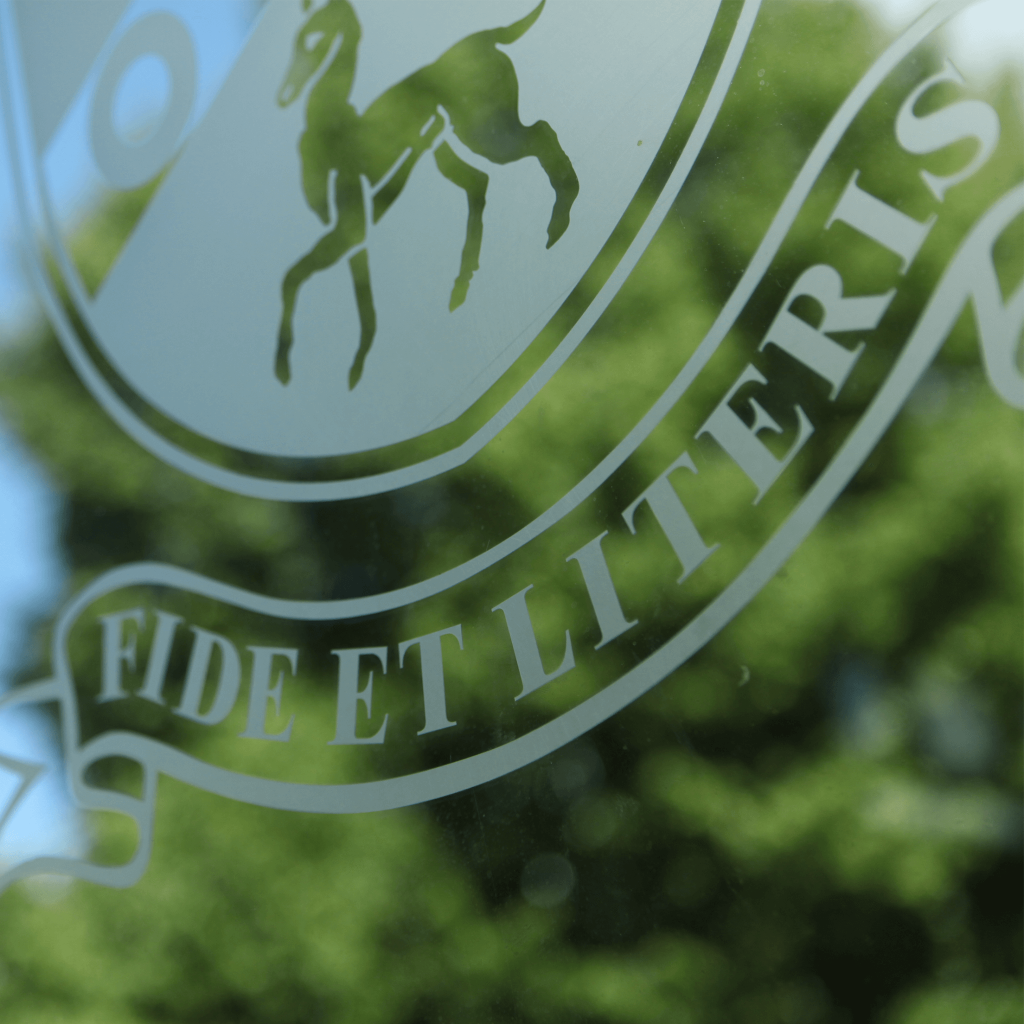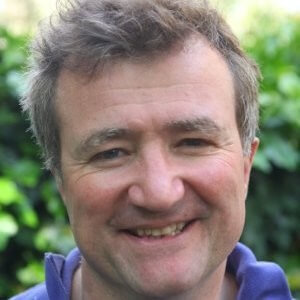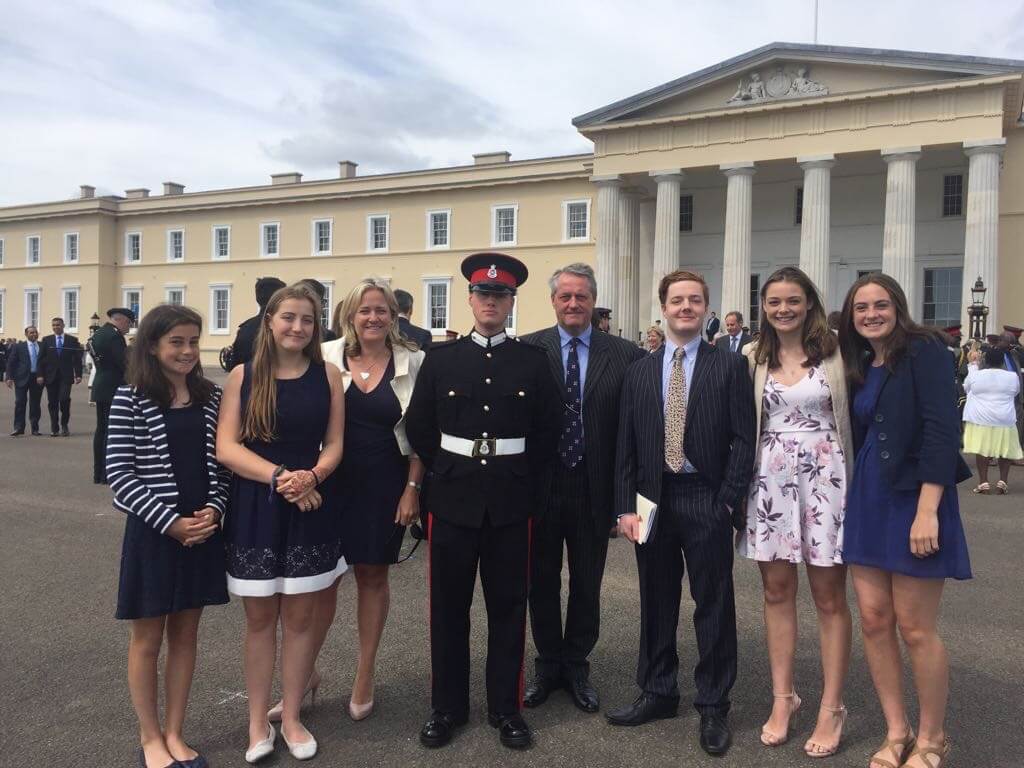

Peter King and Owen Toller’s booklet “St Paul’s in Barnes 1968-2018” took some of us back to 1977 when it made brief mention of a fictional Pauline.
For many, 1977 was the year between the drought and the winter of discontent. For Paulines of the time, this was the year of PJ Ogle. Jervis Smith (1972-77) PJ’s inventor, Geoffrey Matthews (1972-77) his Captain of School (and one of Jervis’s sub-conspirators) and Iain Gale (1973-77) without whom he could never have happened, share memories and lives since School.
One autumnal morning in 1977, the Upper Eighth History were gathered reluctantly in Rev Schofield’s classroom for the weekly, compulsory, divinity lesson.
It was a desultory group of candidates flung together by their common goal of attaining a place at Oxford or Cambridge by taking the history entrance examination in the Michaelmas term.
Such was the infamous reticence of the group that the chaplain was required to take a roll call to ensure full attendance.
Our dog-collared maestro began the roster. When he reached Iain Gale’s name, however, he stumbled, unable to decipher his own handwriting:
“Ogle” he muttered.
No one responded.
“Ogle” he repeated slightly louder.
This time no one replied but there was a slight giggling sound as we all began to realise he had the wrong name.
“Ogle. PJ Ogle!” The exasperated clergyman almost shouted.
At last I felt a whim to practise a prank.
“I think he’s absent, sir” I helpfully proffered, much to the hilarity of the rest of the class including Gale.
The roll call moved on.
It was only afterwards that the germ of an idea began to sprout. What if we could actually bring the unfortunate Ogle to life?
That afternoon a rare opportunity presented itself.
At that time the School published each term a small pale blue book with the names and details of every boy in the School – the School List. The proof of the list was checked at the first Club meeting of the term.
As Captain of G Club (Marlborough to the purists), I had the duty of lining the boys up and checking a batch for name and date of birth, tutor etc. Any omissions or errors were neatly annotated in the proof. I took the pages with the surnames L-Z.
It was the work of a moment to add the words “Ogle PJ, 01/01/1960, UH, G Club, Roe.”
From that time onwards it was official. PJ Ogle had joined the School. Now it was a matter of inventing some background in case any master enquired. We decided among the prefects that Ogle had come to St Paul’s simply to take Oxbridge having been enormously successful at A level at some lesser private school (Oundle I seem to recall).
We put him down for rugby trials and other activities – chess and the Union.
Of course he never showed up. Soon word began to spread about this miscreant fellow. Mr Fry, master in charge of the 5th XV, was successfully persuaded that the new boy was an outstanding rugby player, who had as yet to make it onto the 1st XV radar. Visibly excited, the 5th’s coach duly picked Ogle for that Saturday’s fixture – and when the new prodigy failed to appear had no choice but to place him in detention.
The following Friday after school, as the other detainees filed out for stone picking on the playing fields, the disobedience of our friend PJ became clear. The result? A punishment upgrade to Saturday morning detention.
By now some of the masters were in on the joke and Ogle became one of the most sought after stars. Auditions for plays, choir, and volunteer work; the boy was everywhere! He was elected by a landslide to the General Purposes Committee. The whole school buzzed with rumour and excitement. Was it really true a fictional pupil was at large?
When he didn’t turn up for Saturday morning detention, however, his goose was cooked. The attention of the Surmaster was drawn. Someone in the senior common room cracked and expulsion beckoned.
We did not have sufficient space for an assembly of the whole school to be viable so school notices were read out daily by Mr Pirkis, the Undermaster, over the tannoy while we sat in class before first break.
The 10:20 notices that Monday morning became the stuff of legend. All began normally with the sports results of the previous Saturday and then a succession of minor announcements about choir practice and school trips. Attention dwindled…until…
“And, finally, a notice for the Upper Eighth. PJ Ogle was this morning escorted by the School Porter to the Main Gate. He will not be returning. That’s all.”
A huge cheer went up from all the classrooms around the building. It was the first time we had ever witnessed the School display a formal sense of humour!
Term continued and routine kicked in. We sat our exams and a record 68 of us won places at the two prestigious homes of academia.
The story has a happy sequel. Two or three years later, I returned to play for an Old Paulines team against the School. In the changing rooms I ventured into one of the cubicles. On the wall behind the toilet was daubed in black felt pen: “PJ Ogle is Innocent”!
I smiled to myself. At least I had played my tiny part in Pauline folklore.

– Jervis Smith (1972-77)
There is no doubt that being expelled from St Paul’s for not, in any real sense, existing was a serious blow to Ogle and one from which he took some time to recover. Within six months though he was enjoying life once more. Ironically, perhaps, it was a chance encounter with a Paulina that marked a turning point in his fortunes. Ambrosia Creamed-Rice was a barmaid at The Coach & Horses in Greek Street: Percy met her there and she gave him an entrée into the demi-monde of late 1970s Soho.
It was a thrilling environment for a young and impressionable boy: he took a tiny attic room in Dean Street and worked – occasionally – as an exotic dancer at the Windmill Theatre.
But most of his time was spent drinking with the likes of Jeffrey Bernard and Francis Bacon. He posed for the latter on many occasions – indeed one of the painter’s great 1979 triptychs was of Ogle, but Bacon (who had misheard Percy’s name when first introduced to him in The Colony Room) called it ‘Portrait of Peter Oglethorpe.’ The picture is now in a private collection.
It was in Bacon’s studio that Ogle met Robert Wilson, a former Gurkha officer who had founded a security company called Machoman, a firm which had made something of a specialty of Third World regime change.
Wilson was a man of extremely dubious moral character, but young Percy fell under his spell, and after an improbably short period training in the Oman found himself leading a coup attempt on a small island in the Indian Ocean. It was not a success. The plotters had successfully secreted their arms and ammunition in their hold luggage, but they had neglected to secure visas and never achieved admittance into the baggage hall.
Crushed by his ignominious failure Percy returned to London, resigned from Machoman and joined the newly founded investment arm of the Spanish Bank Corporation. His timing was fortuitous, but impeccable. Over the next fifteen years Ogle rose to be one of SBC’s managing directors. There were 87 of them, but since in the heady years following Big Bang each of them made in excess of £10m p.a. there was little concern to prove oneself primus inter pares.
In 1995 Percy, by now 35 years old, set his heart on a career in politics. He had married Ambrosia some years earlier, and since her father was a leading Conservative party donor he was able to secure the nomination for a safe seat in the Midlands. The majority at the previous election had been 14,000, so thoughts of defeat were far from Ogle’s mind on 1st May 1997. And even though this was to be the year of Blair’s triumph Percy would probably have held onto the seat: but unfortunately another candidate, P.G.Oglen, of the Brummies for Britain party, secured 5,645 votes which were undoubtedly intended for the Tory hopeful. Ogle lost by 35 votes after two recounts.
For the last 30 years Ogle has lived in retirement on his Hampshire estate, devoting himself to the breeding of parakeets and the cultivation of medlars, and spending much time on charitable work. He is the founding Chairman of Teachspell, which works to increase levels of literacy amongst public school masters; and he is a Trustee of several national arts organisations, at whose meetings he is famed both for his red felt braces and for the self-important and ill-informed nature of his comments.
Ambrosia left him in 2005 to become the partner of Strictly Come Dancing star Piotr Oglovsky. Percy has never remarried. Sadly he ignores any invitations to year group reunions at either of his old schools. He does not intend to remedy the situation.

– Geoffrey Matthews (1972-77)
On leaving St Paul’s, Iain Gale (1973-77) initially studied Modern History with Defence Studies at Edinburgh University before switching to History of Art. Graduating MA Hons in 1982, he joined Christies as a picture expert; working in London and Scotland and during this period also learnt how to march with the TA. In 1985, having discovered that he could write, he published a book on auctioneering and moved to Wales to work as Advertising Copywriter for Laura Ashley.
Having created the ad campaign on which that company was floated, he left LA and was invited back to Christies in 1988 to head up the Modern British Pictures department in South Kensington.
A defining move to journalism came in 1990 when he joined the Independent, then 4 years old, as deputy art critic, becoming its art critic in 1995. In 1996 he was headhunted by the Scotsman as Art Critic for Scotland on Sunday where he remained until 2009.
During this time he wrote eleven books on art and literature, including monographs on Sisley, Corot, Arthur Melville and Sir William McTaggart and curated three major exhibitions for the National Galleries of Scotland.
In 2000 Gale founded the magazine Caledonia, which he described as ‘a sort of Scottish Vanity Fair’. He remained as Editor for the next three years.
From 2001 to 2011 he was also Editor of the magazine of the National Trust for Scotland.
In 2004 Gale published his first military work, a semi-fictional account of the Waterloo Campaign. This was followed by a series of 3 military novels set in the Duke of Marlborough’s campaigns and a semi-fictional account of the battle of Alamein. Other fiction series followed, notably one set in World War II and the acclaimed James Keane series set in the Napoleonic Wars.
Gale was commissioned to write the official Regimental History of the King’s Own Scottish Borderers and also published ‘Scotland Forever’ an account of the Scots Greys role in the Waterloo Campaign.
In 2014 Gale was invited to become a Consultant specialist in Paintings and Militaria for the Edinburgh auction house Lyon and Turnbull and went on to run their Old Master Picture department from 2015 to 2018. He remains a Consultant with the company.
He currently runs a battlefield tours company, taking small parties on bespoke tours to Waterloo, the Western Front, the Normandy Beaches and Dunkirk.
In 2019 his latest book, Zero Hour, an account of the First Day on the Somme was published.
Gale served on the Royal Scots Dragoons Guards’ Waterloo 200 committee from 2013 to 2015 and also played a role in the Waterloo Commemorations in 2015 in Belgium.
Since 2011 he has been an active member of the Scottish Committee of Combat Stress, the Veterans’ Mental Health Charity. He has also served as Secretary of the Society of Authors in Scotland and is currently a committee member of the GWCT auction committee in Scotland. He is a Manager of the New Club in Edinburgh and a member of Elie Golf Club.
Gale married in 1991 and had three children with his first wife, who died in 2008. In 2009 he remarried an Edinburgh GP and inherited three stepdaughters.
His children and stepchildren attended Fettes College in Edinburgh and his eldest son is currently a serving officer in the Royal Scots Dragoon Guards, with a brother in property in London and a sister about to leave school. Of his three stepdaughters, two are at university and one still at Fettes.
He divides his time between houses in Edinburgh and Fife.
He lists as his pastimes: battlefield archaeology, collecting militaria, shooting (with some success) and golf (with far less success).
Sadly Iain ignores any invitations to year group reunions at his old school. He intends to remedy the situation.

Iain Gale (1973-77) and family